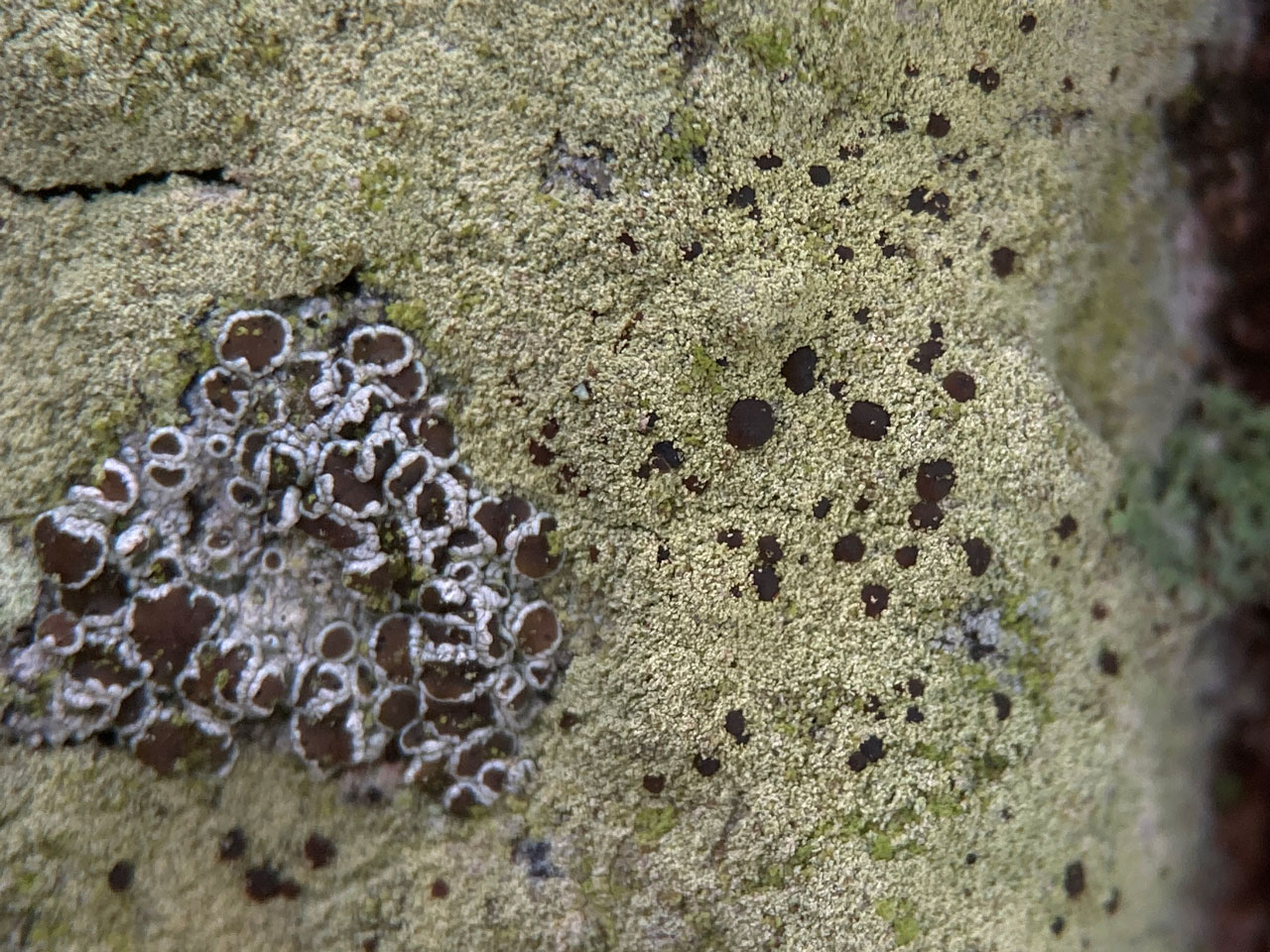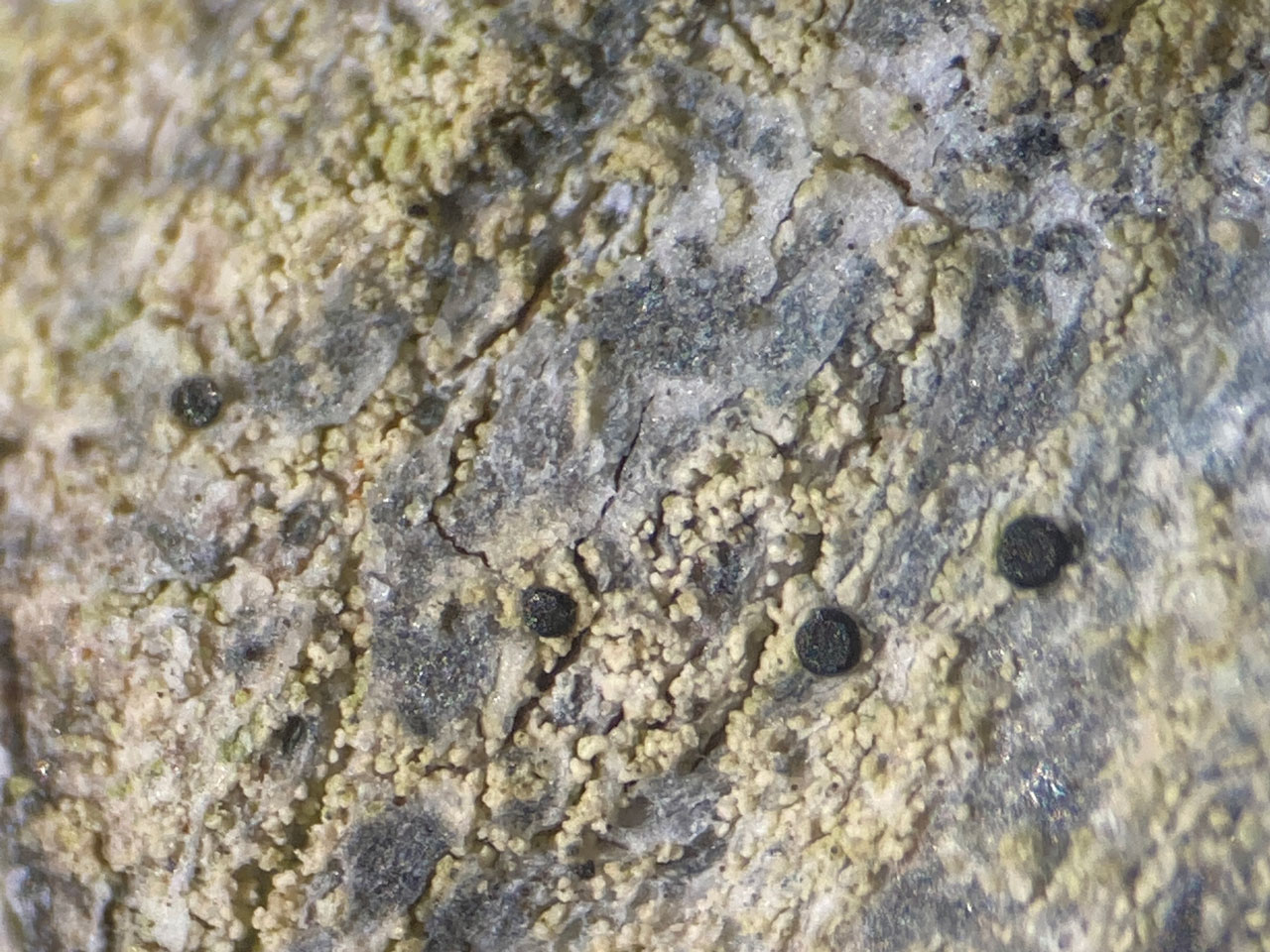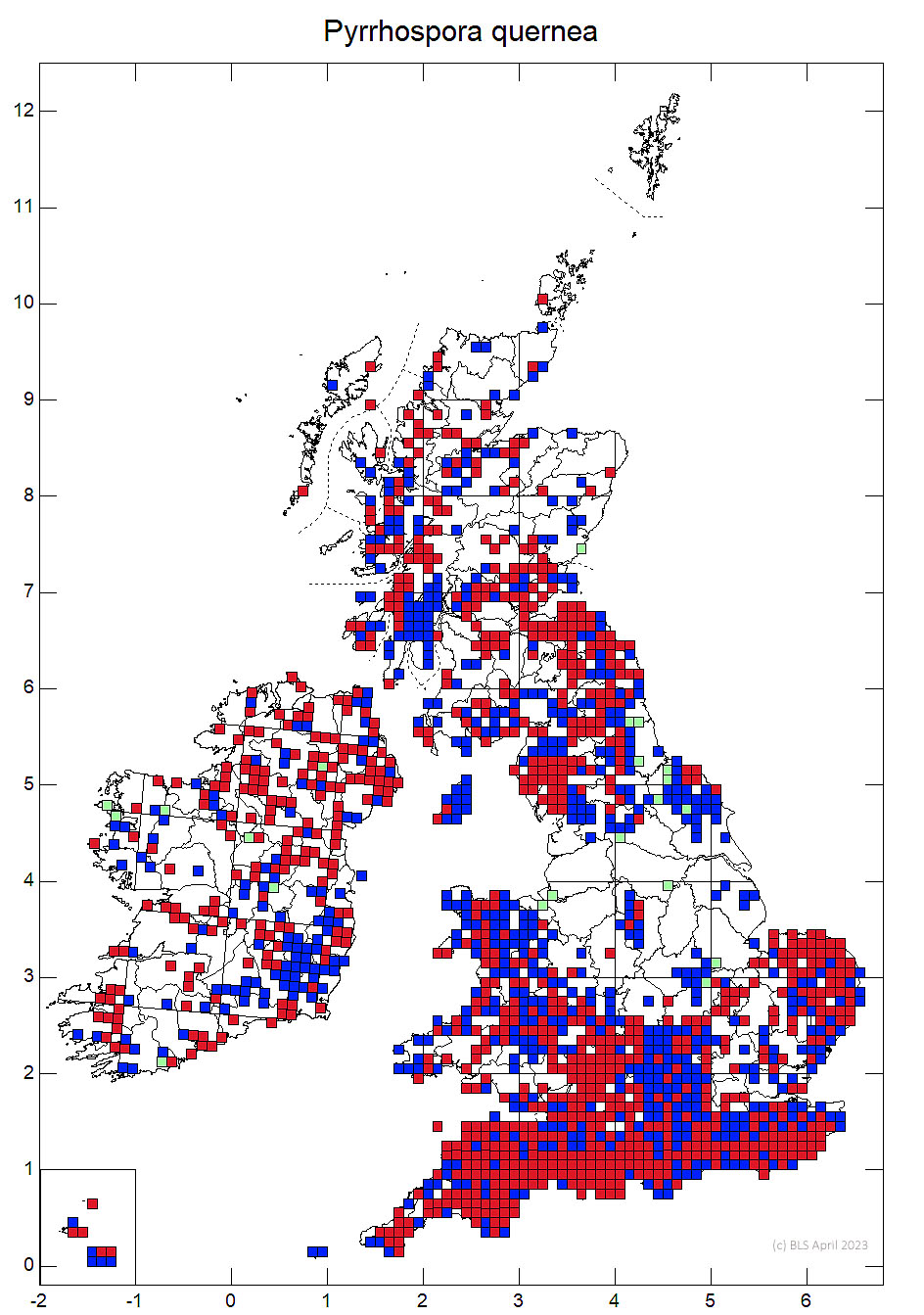A C+ orange yellowish-fawn crust, with the thallus covered in blastidiate granules, that break down into soredia. A very common species found on ± acidic, rough bark and occasionally wood. Throughout lowland Britain and Ireland, becoming scarcer in the north and still absent from formerly acidified areas of central England.
Thallus thick, blastidiate with granules to ca 0.15 mm diam. arising over the surface of the thallus and breaking down into soredia, even, often indistinctly areolate, yellowish or greenish fawn; prothallus generally present, forming a delimiting black line to 0.25mm wide. Apothecia 0.4–1 (–1.5) mm diam., strongly convex, often irregular in shape, dark reddish brown; true exciple becoming excluded; epithecium interspersed with reddish brown granules, K+ dissolving, purplish (7-chloro-emodin). Ascospores (7–) 8–12 (–14) × (5–) 6–7 (–8) µm. Thallus C+ orange, K–, K/UV(wet)+ bright yellow-green, KC+ orange, Pd– or weakly yellowish, UV± blackish orange (arthothelin and thiophanic acid).
Lecanora expallens has a thinner, finer, sorediate thallus, with the sorediate crust developed lens-shaped soralia not blastidia. Also, the thallus is a much more distinctly yellowish green , lacking a fawn tint, and is without a distinct black prothallus; its thallus contains usnic as well as thiophaninic acid. Pertusaria flavida can be similar but has at least some distinct isidia and lacks the fawn tints and arthothelin of Pyrrhospora quernea and is UV+ very bright orange. Cliostomum flavidulum is a brighter yellow-green has fine soralia and is C–, K/UV(wet)– and Pd+ orange-red. Lecanora compallens is also C–, K/UV(wet)– but is Pd–.
Rarely parasitised by the small black disks of Lecidella parasitica. These are easily overlooked as immature apothecia of Pyrrhospora quernea, but can be detected by their small size, pure black colour (no trace of reddish pigmentation) and the disks remaining flat.
On ± acidic, rough bark, occasionally wood, especially of Oak, mostly in well-lit situations avoiding high nutrient levels, very rarely on sandstone rocks.

Throughout lowland Britain and Ireland, becoming scarcer in the N. and extreme Atlantic areas, still absent from formerly acidified areas of central England.
Cannon, P., Malíček, J., Ivanovich, C., Printzen, C., Aptroot, A., Coppins, B., Sanderson, N., Simkin, J. & Yahr, R. (2022). Lecanorales: Lecanoraceae, including the genera Ameliella, Bryonora, Carbonea, Claurouxia, Clauzadeana, Glaucomaria, Japewia, Japewiella, Lecanora, Lecidella, Miriquidica, Myriolecis, Palicella, Protoparmeliopsis, Pyrrhospora and Traponora. Revisions of British and Irish Lichens 25: 1-83.
Text by Neil A Sanderson, based on Cannon et al (2022)





